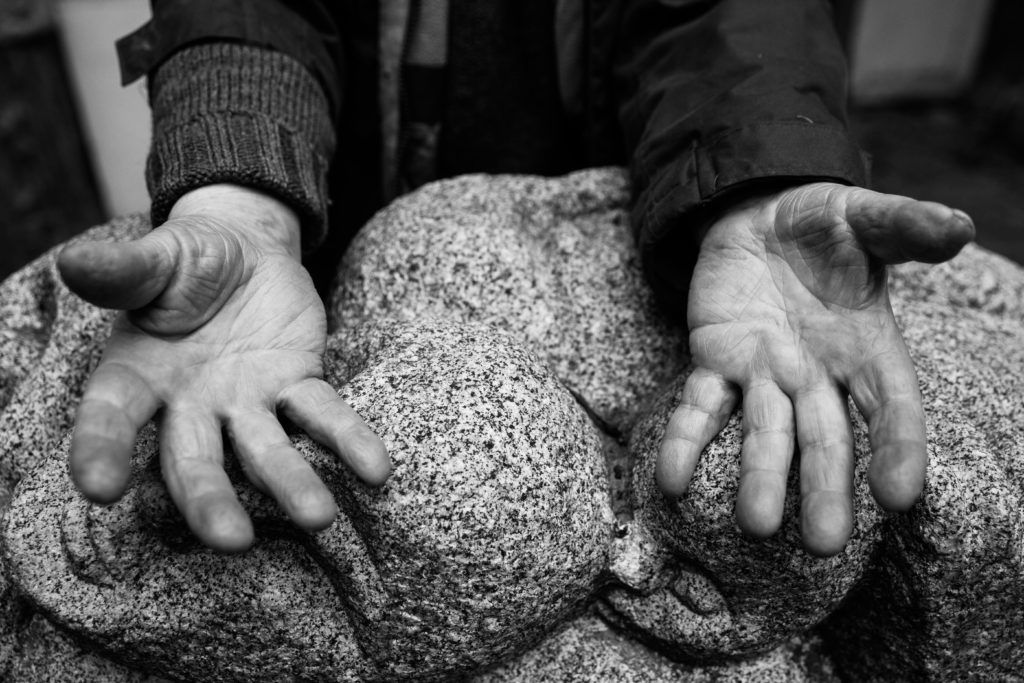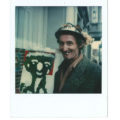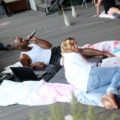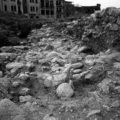Looking for Eros
For the original German version of this text please visit pokusberlin.com
The erotic image is a genre in itself. When I write: erotic sculpture, erotic literature, dance, painting, etching, erotic photography, everyone propably guesses what is meant. But it’s only a guess because the understanding is quite diffuse. It has something to do with sensuality, with a representation of sexuality. The word erotic does not spontaneously appeals a definition. On the contrary, its nebulous aura awakes the imagination and the senses. But our imagination is so shaped, chiseled by our language and by social norms, that it is often very limited when one begins in life to deal with eroticism. This is the reason why eroticism is usually thought in a binary way as either pornographic depictions or intellectualized, sublimated art images. Despite the narrow and highly subjective boundary between the two genres, this differentiation is especially true for photography and film. According to Roland Barthes, the difference between pornography and erotic lies in the way sexuality is represented: “Pornography ordinarily represents the sexual organs. […] The erotic photograph, on the contrary (and this is its very condition), does not make the sexual organs into a central object; it may very well not show them at all; it takes the spectator outside its frame, and it is there that I animate this photograph and that it animates me.”1 Most of the time, pornography is not considered as art, while the erotic image has more chances to be seen as a work of art because it is perceived like a more subtle process of aestheticization. And be they categorized as pornography or art, the erotic representations usually reflect numerous stigmatizations and social norms that lead to the oppression of a part of humanity – women, among others. These representations, or the fact that these representations are considered as erotic, reinforce these norms even more. What could define the erotic image beyond stigmatizing representations? How can this genre be redefined through a feminist approach? For a beginning, it might be better to try and think of the concept of erotism beyound sexuality. To even dissociate those two concepts from one another.
The author Audre Lorde does not directly address the question of representation, but she does bring the basis of an answer by questioning eroticism and redefining it as a power. She speaks of the erotic as a strong, internal power, which is tightly bound to the capacity of joy2. The erotic power “rises from our deepest and nonrational knowledge”3, but this resource is “vilified, abused and devalued within western society.”4 This instinctive knowledge is actually the most accurate indicator – “a guiding light”5 – to recognize what feels right and provides joy. That is why it is highly important to reconnect with oneself in order to be able to feel the erotic power. This is even the condition to self-empowerment and to self-love, which is the only antidote to self-destruction. Audre Lorde refers to an antic definition of the Greek word Eros: “the personification of love in all its aspects – born of Chaos and personifying creative power and harmony.”6 The relationship with oneself, when illuminated by the erotic power, enables awareness and a certain liberation. This very power leads Audre Lorde both in her political activism and in her poetry. Art, and sexuality as well, is therefore included in her definition of the erotic: Art is an erotic experience not because – and not only when – it involves a representation of sexuality, but because it takes its source from an erotic, liberating power. Audre Lorde’s poems sometimes relate to her sexual life, but they always embody and convey the erotic power.
Audre Lorde is neither the first nor the only author who states that the connection with oneself is the very first condition to artistic creativity. This was also a fundamental principle for Rainer Maria Rilke, among others. Even if it seems difficult to reconcile Audre Lorde and Rainer Maria Rilke (a “white old father”7!), their respective relationship to art, to poetry, are in a sense very close. For Lorde as for Rilke, nothing “good” can be written by someone who is not truly listening to him*herself. In his letter to a young poet, Rilke provides the following advice: “You are looking outward, and that above all you should not do now. Nobody can counsel and help you, nobody. There is only one single way. Go into yourself. Search for the reason that bids you write; find out whether it is spreading out its roots in the deepest places of your heart, acknowledge to yourself whether you would have to die if it were denied you to write. This above all – ask yourself in the stillest hour of your night: must I write?”8. And the inner voice that would whisper “yes” in the stillest hour would be Eros’s voice. This voice is the creative power that Audre Lorde defines as eroticism. Eventually, Rainer Maria Rilke and Audre Lorde agree on one essential point: writing is vital and the source of poetry can only be found within oneself. However, the reason for this statement is very different by both authors.
Audre Lorde encourages every woman to work actively to reconnect to herself, because it leads to a liberation that is absolutely necessary. On the contrary, Rilke recommends to those who do not feel the necessity to write to renounce it. Where does this fundamental difference come from and why is it so significant? For Audre Lorde, the political feminist approach is essential. Those who let the erotic power get to them will become aware of their silences, of their oppression, and will no longer be able to blindly accept them. The erotic power bounds you to take the word and the power in order to change something that has become absolutely unbearable. It is a revolution in itself. That is why “poetry is not a luxury”9 but a necessary self-empowerment. Eros, as a creative power, will help every woman to free themselves from the patriarchy. And that is why Audre Lorde encourages every woman to listen and express themselves. She says herself that she speaks as a Black, lesbian woman who has to deal with intersectional discriminations (sexism, racism, social discrimination, among other things). She is therefore addressing women or else said she is addressing people who can identify themselves with massive oppression. On the one hand, she speaks from her own experience; on the other hand she knows for sure that nothing positive can come out of oppression – most certainly not a better society. There is no such political dimension in Rilke’s works. He wrote from a privileged position and his art did not deal with oppression. The necessity of writing was for him purely individual and private, whereas this necessity corresponds for Audre Lorde to a political commitment and to a liberation.
One could say that Lorde’s theory applies to anybody whose existence has been strongly oppressed and who needs the erotic’s liberation power to survive. The image placed below might embody and represent this erotic power as it is defined by Audre Lorde. It shows the hands of Shelomo Selinger, a man who spent four years of his life, from 1942 to 1945, in Auschwitz and nine other concentration camps. For some years now he has been working at stone sculptures like the one that is to be seen on the bottom of the photograph10. Through his art, Shelomo Selinger deals with his traumatic experience and in this sense his practice can be seen as a force for empowerment, his existence having been extremely oppressed. So many things could be read in his open hands, but as a viewer one does not dare to interpret too far. It seems, however, that the photographer makes these hands become a symbol of Selinger’s art practice. In that sense, they would also be a symbol of his self-empowerment. Therefore, this photograph might be a representation of the erotic power. Thanks to Audre Lorde’s broad definition of the erotic, the term is here to be understood beyond any reference to sexuality. A representation of the erotic, then, because the work represents an art practice that originates from a self-empowering movement.
This photograph is also an embodiment of eroticism – always in the sense of power, according to Lorde’s definition – because it is the result of a specific artistic gesture. While the interpretation of the photograph as a representation of eroticism corresponds to an iconographic reading, the idea of an embodiment of eroticism refers to the artist’s aesthetic approach. This artistic gesture belongs to the photographer Teresa Suárez, who captured Shelomo Selinger’s hands, his history and his sculptures. She is the one who decided to focus on the hands. In doing so, one might say that Teresa Suárez treats her subject in an indirect way. What she shows is not the central object (namely Shelinger himself, or his sculptures). “She leads the viewer out of her frame”, to quote Roland Barthes. And this is why her photograph can be read as an embodiment of eroticism, and here again, this has absolutely nothing to do with sexuality. This interpretation merely refers to a definition of eroticism as an art of evocation.
In deed, even if Roland Barthes’ definition of eroticism is reductive because he understands it in a binary way as the counterpart of pornography, it remains interesting in its aesthetical dimension: For Barthes, the erotic is the art of evocation. This definition is actually very close to Audre Lorde, who says the following thing about her own art practice: “I speak of poetry as a revelatory distillation of experience.”11 Using the same metaphor for poetry, Arthur Rimbaud spoke of a “quintessence”12. Poetry, then, consists in making something appear without representing the apparition itself. The object is not to be shown clearly, but to rise after a long distillation process. This is especially true for Teresa Suárez’s photograph, where Shelomo Selinger’s history and works are not shown directly. This photograph would be erotic for what it shows as well as for the way it shows it. It possibly shows someone’s liberation from oppression, but without directly referring to it. It might be therefore an erotic image for several reasons, even though it does not deal in any way with sexuality. Audre Lorde’s feminist approach in her definition of erotic allows to understand this concept far beyond sexuality and sexualization. Questioning the notion of eroticism is not only about artists producing other kind of erotic images under the light of Audre Lorde’s definition, but also about changing the way we look at existing images.

1 Barthes, Roland. Camera Lucida – Reflections on Photography. Translated by Richard Howard. New York: Hill and Wang, 1981. First French edition 1980.
2 Lorde, Audre. “Uses of the Erotic: The Erotic as Power”, in Sister Outsider: Essays and Speeches. Berkeley, Calif: Crossing Press, 2007.
3 idem
4 idem
5 idem
6 idem
7 Lorde, Audre, “Poetry Is Not a Luxury”, in Sister Outsider: Essays and Speeches. Berkeley, Calif: Crossing Press, 2007.
8 Rilke, Rainer Maria. Letter to a Young Poet. Translated by M. D. Herter Norton. New York: W. W. Norton & Company Inc., 1934.
9 Lorde, Audre, “Poetry Is Not a Luxury”, in Sister Outsider: Essays and Speeches. Berkeley, Calif: Crossing Press, 2007.
10 Shelomo Selinger is a Polish sculptor coming from a Jewish family. He is a survivor of the Shoah and lives in Paris since 1956. For more information on his work, please visit Teresa Suarez’s website.
11 idem
12 Rimbaud, Arthur, “Lettre du voyant, 1871.
Short Bibliography:
Lorde, Audre. Sister Outsider: Essays and Speeches. Berkeley, Calif: Crossing Press, 2007. First publication 1984.
Barthes, Roland. Camera Lucida – Reflections on Photography. Translated by Richard Howard. New York: Hill and Wang, 1981. First French edition 1980.
Bentouhami, Hourya. „Audre Lorde : le savoir des opprimées“. Revue Ballast, 28. Mai 2019. https://www.revue-ballast.fr/audre-lorde-le-savoir-des-opprimees/.
Perrin, Céline. „‚Sister Outsider‘ d’Audre Lorde : la poésie et la colère“. Nouvelles Questions Féministes, 2004/3 (Vol. 23), pages 126 à 129, Nr. Vol. 23 (3. August 2015): 126–29.
Rilke, Rainer Maria. Letter to a Young Poet. Translated by M. D. Herter Norton. New York: W. W. Norton & Company Inc., 1934.
Seleshie, Loza. „Usages de l’érotique: l’érotique comme pouvoir (1978) – Audre Lorde“. Chroniques littéraires africaines, Juillet 2020.
http://chroniqueslitterairesafricaines.com/usages-de-lerotique-lerotique-comme-pouvoir-1978-audre-lorde/loza/.






